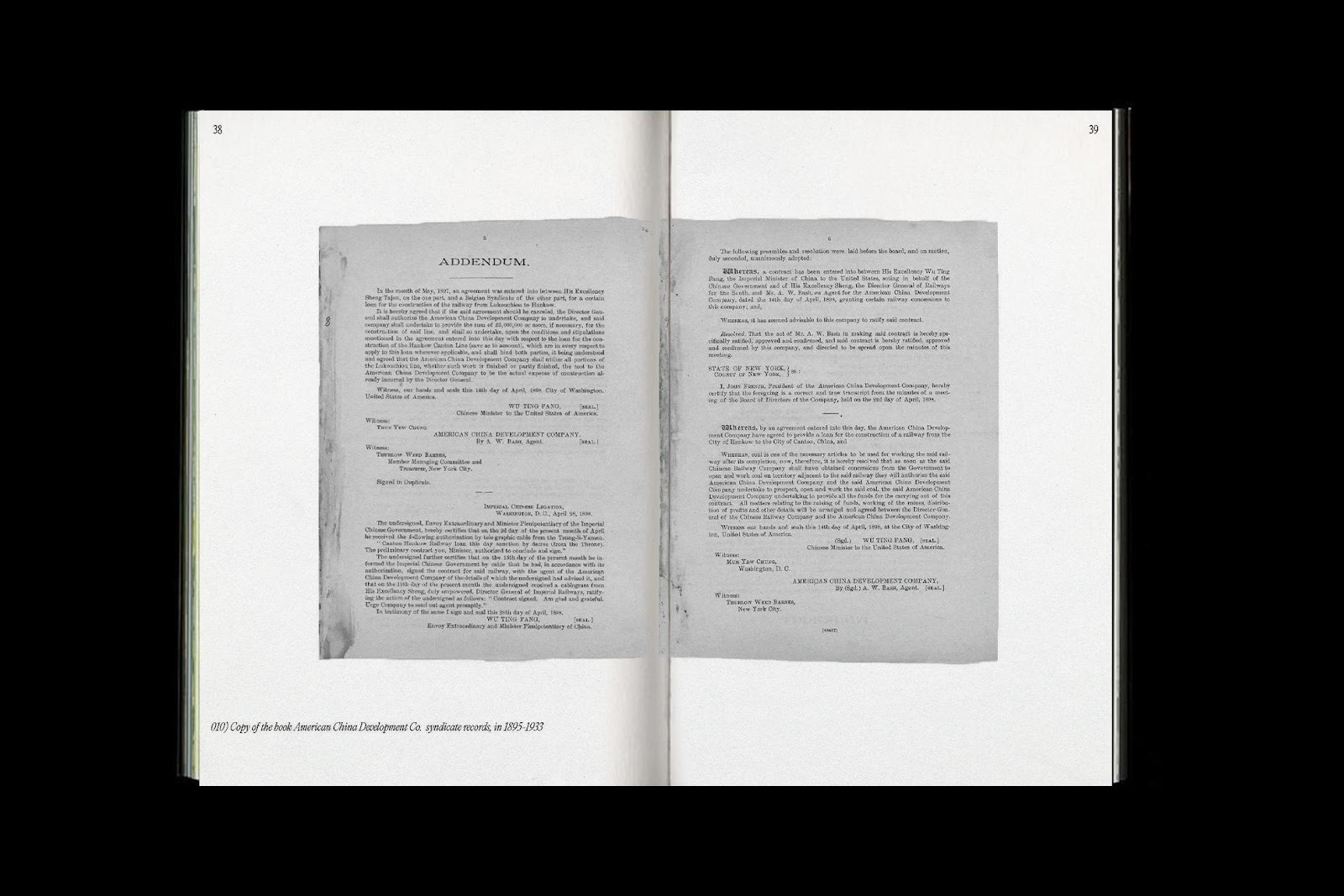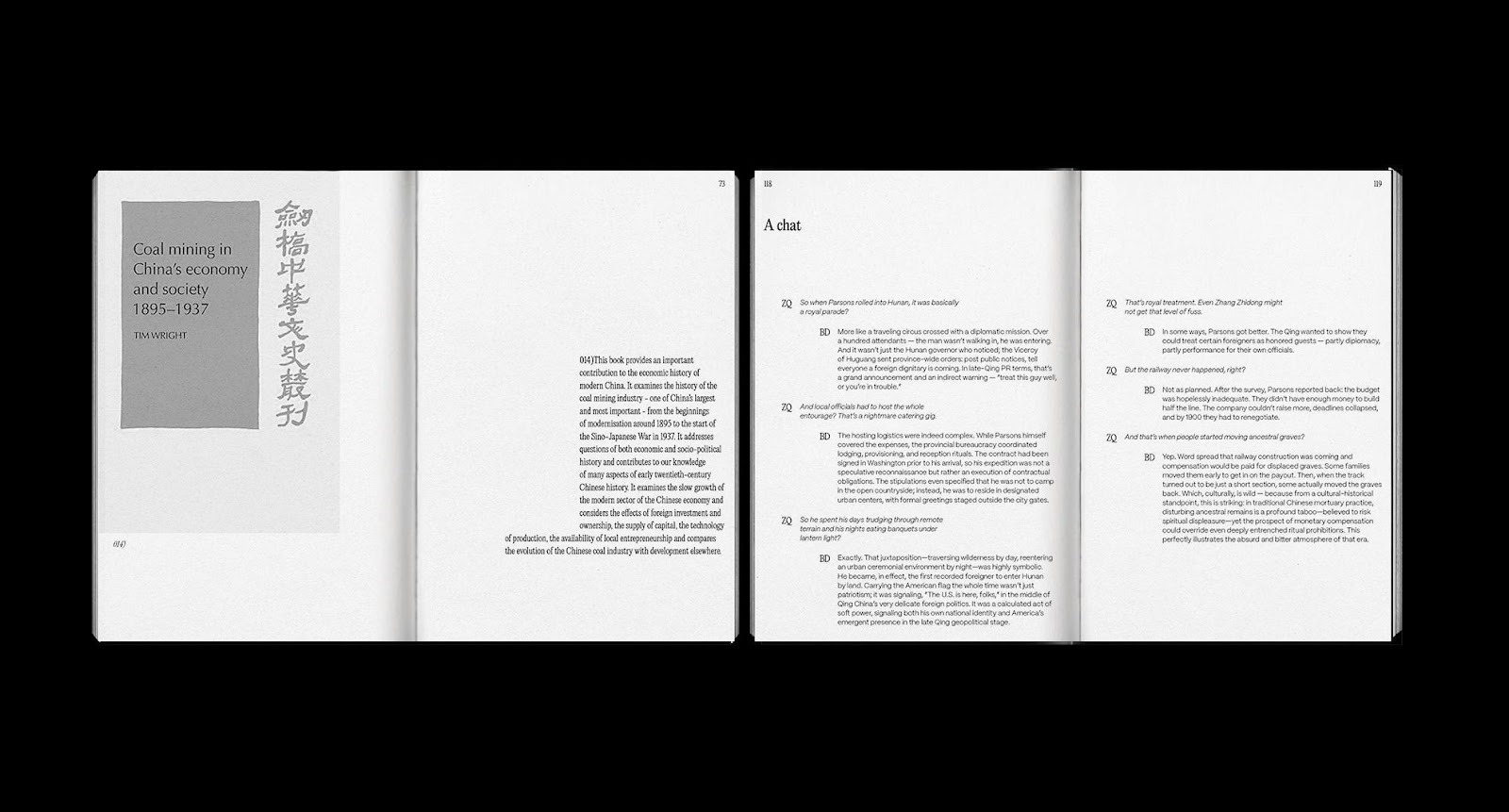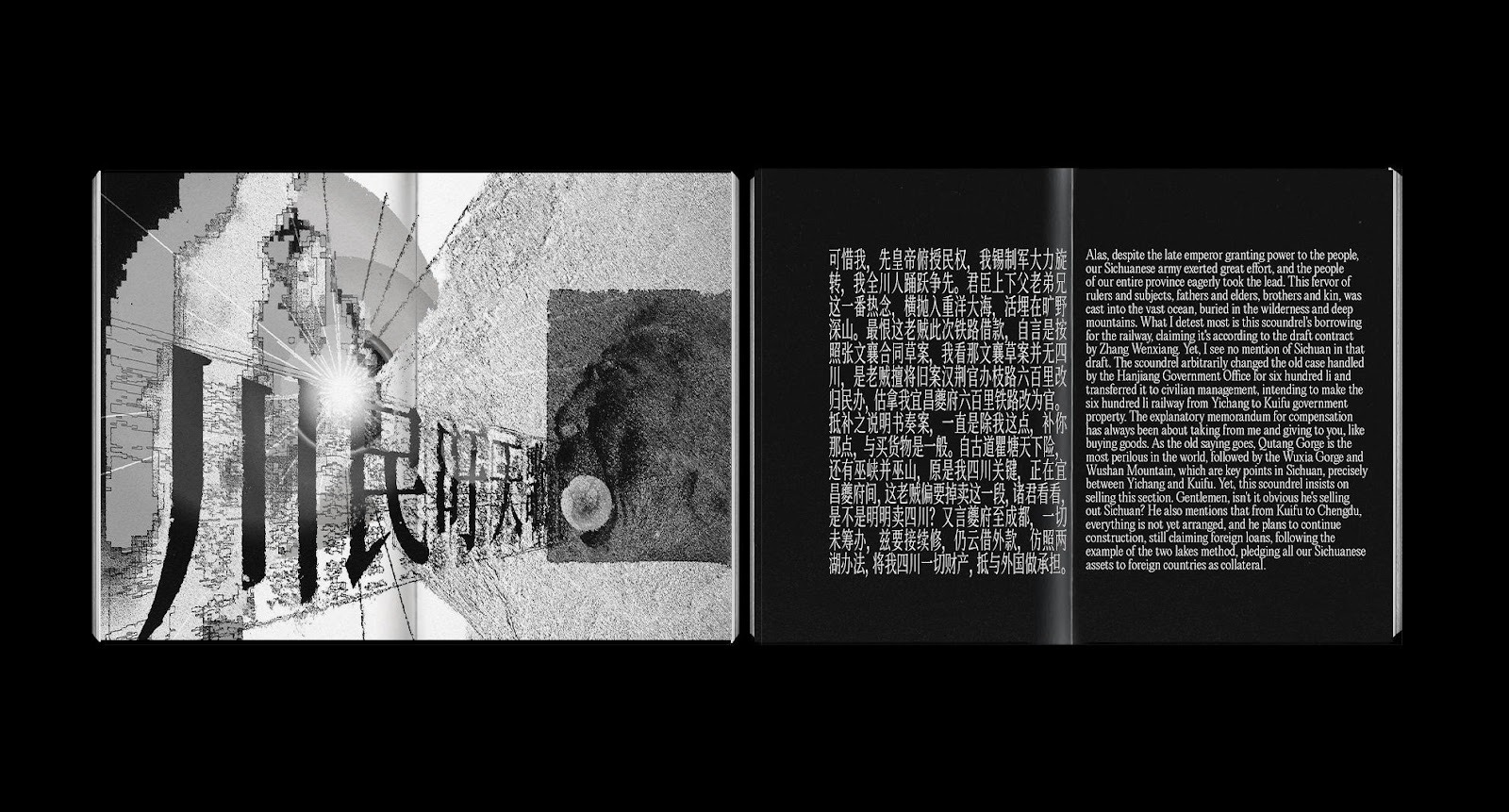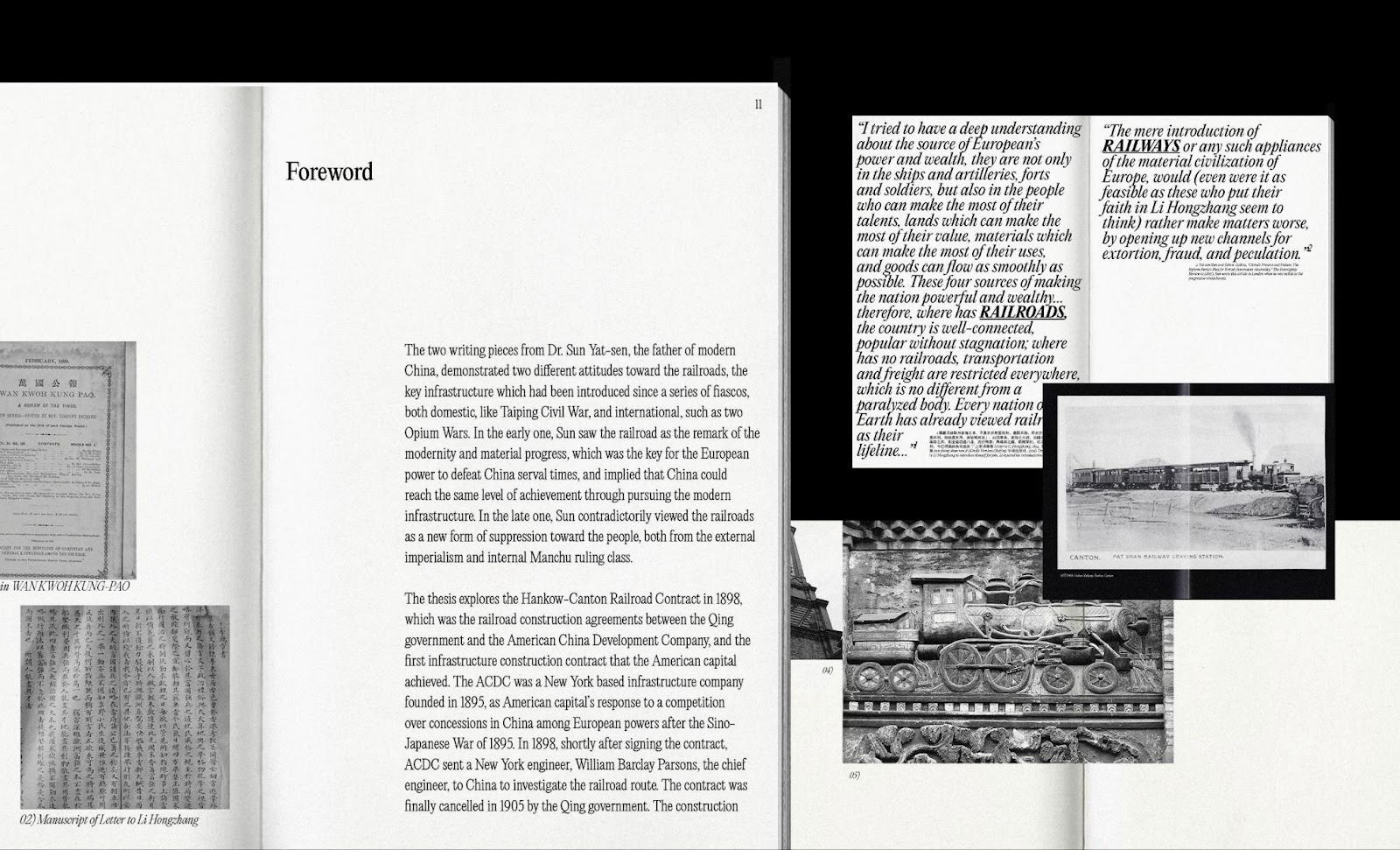“Infrastructure appears neutral, just ‘how things work’. But it physically encodes social exclusion. Qian’s Book goes back to 19th-century railroad politics and asks: Who gets infrastructure? Who gets left behind? And how is this exclusion designed, engineered, and justified as ‘progress’?”
A single railroad contract became a mirror reflecting three incompatible futures for China. American capital, through William Barclay Parsons’s brutally frank 1899 survey, sought resource extraction disguised as modernization: mining rights mattered more than trains. The Qing government desperately needed infrastructure to prove sovereignty and centralize power. Provincial gentry resisted, recognizing that foreign-built railroads meant foreign control of Chinese territory. The conflict wasn’t tradition versus progress, it was a fight over who had the right to modernize China and on whose terms.
For Zhihan Qian, a critically minded designer who investigates spatial politics and power, the three-way struggle over China’s railroads offered irresistible dramatic potential. Collaborating with writer Baiyi Du, she created Lines of Control. Du conducted the historical research and writing, while Qian’s design work, the visual system, archival typography, and documentary layouts perform its own analytical investigation. It’s a slim book readable in an afternoon, but dense with historical complexity, extending a body of work that has found recognition in both design and cultural institutions—including the acquisition of her earlier publication by major institutions such as The Metropolitan Museum of Art’s Thomas J. Watson Library.
The design of Lines of Control embodies its subject’s tensions. Open the minimal cover, the full-bleed railway lines extend across pages with almost violent directness. Rigorous investigative text alternates with emotionally charged typographic moments—particularly Qian’s treatment of resistance documents like Sichuan People’s Cry to Heaven (川民吁天歌), where text arrangement becomes a tool for what she calls “conveying the story’s multiple rhythms.” The project builds on Qian’s broader practice, which includes highly selective international exhibitions at the Brooklyn Art Book Fair, Detroit Art Book Fair, Boston University’s Multiple Formats, and Pioneer Works’ Press Play, all of which are platforms known for showcasing leading voices in critical and experimental publishing. The approach echoes her earlier work, The Memeing of Political Discourse, a project recognized with prestigious KTK Design Awards, demonstrating a consistent methodology: using typography to decode how political power operates through both language and form.
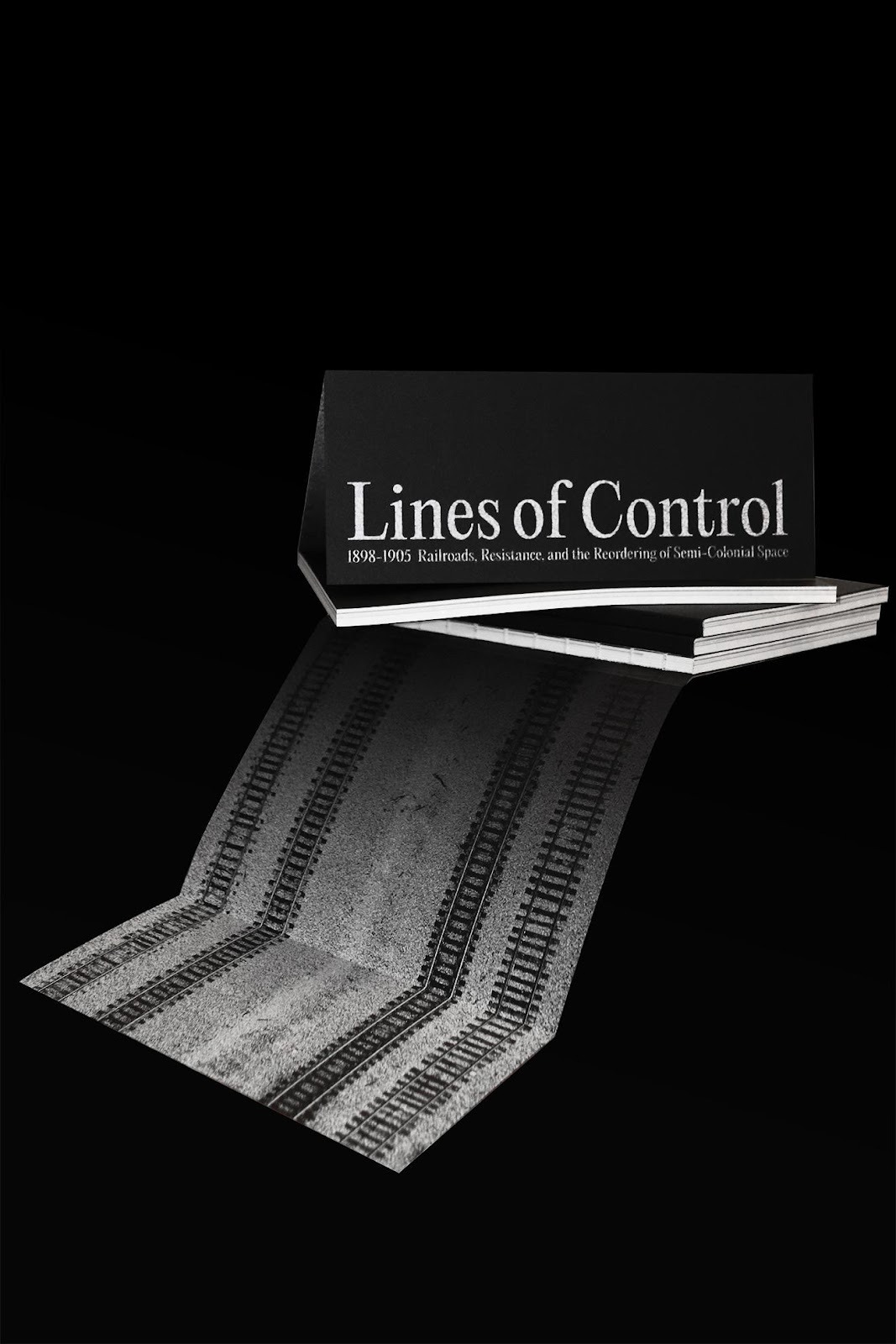

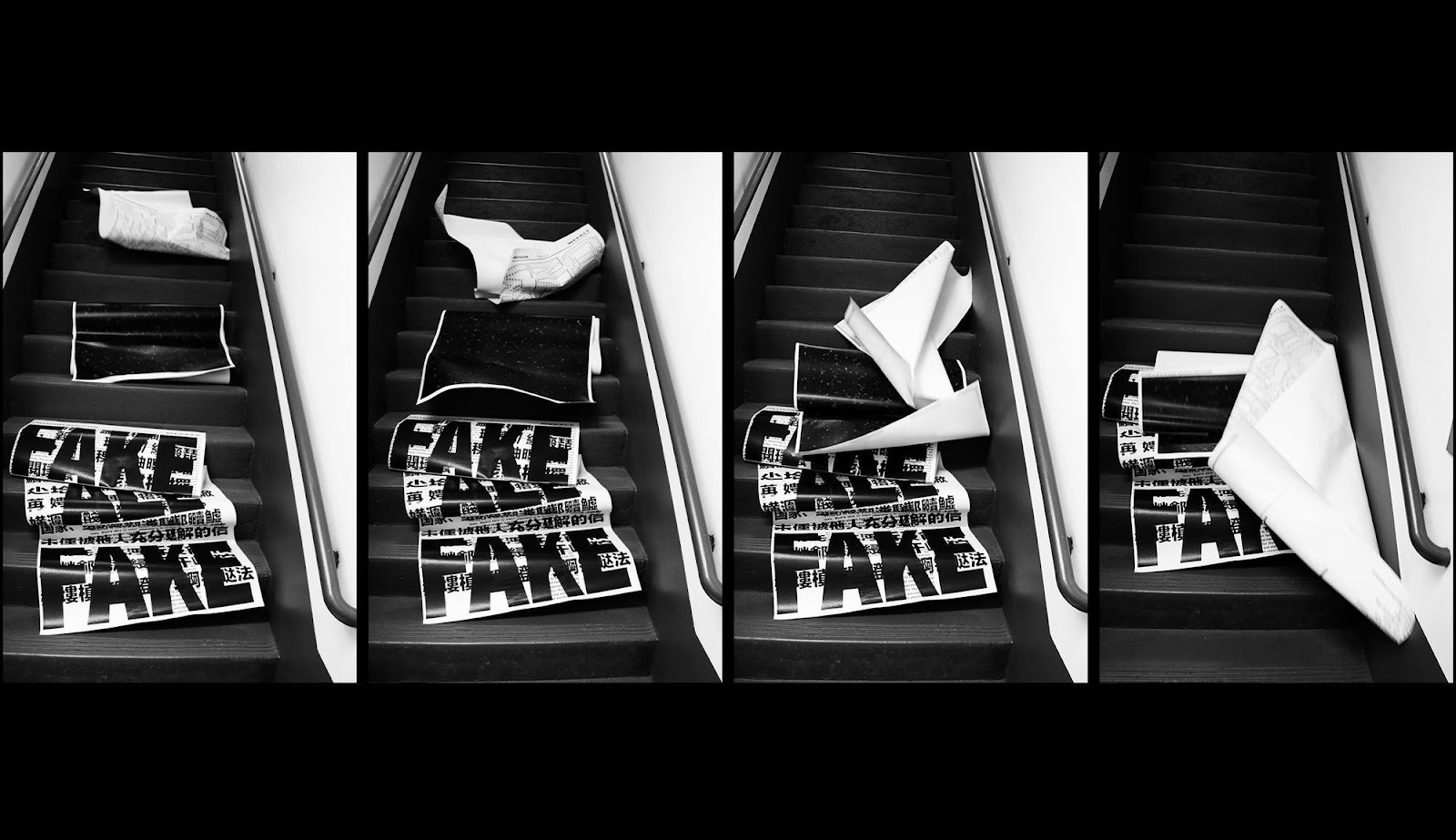
What Lines of Control demonstrates is that design is not just a tool for making infrastructure—it’s a tool for unmaking it, for taking apart the visual and textual systems that make power appear inevitable. It provides a methodology for decoding contemporary infrastructure politics. The same questions that tore through China in 1898 still structure infrastructure debates today: Who finances it? Who profits? Whose communities get connected, and whose get bypassed? By revealing how colonial powers used the language of engineering, contracts, and surveys to make extraction appear as modernization, this work shows us how to recognize when “development” and “progress” are being weaponized.
